When things are done well, new flagships are always more interesting than the previous year’s models. The year 2023 is no exception, as the Snapdragon 8 Gen 2, the chip powering this year’s high-end phones, is far superior to its predecessor. The Xiaomi 13 Pro, like its little siblings, takes advantage of this.
But a smartphone is not just a chip, far from it, and Xiaomi has also packed in plenty of features: a one-inch sensor for photography, a telephoto lens, a WQHD+ 120Hz display, and 120W charging. How does Xiaomi’s highest-end smartphone stack up? Find out here.
Technical Specifications
| Model | Xiaomi 13 Pro |
| Dimensions | 7.46 cm x 16.29 cm x 8.38 mm |
| Manufacturer interface | MIUI |
| Screen size | 6.73 inches |
| Resolution | 3200 x 1440 pixels |
| Pixel density | 522 ppi |
| Technology | OLED |
| SoC | Qualcomm Snapdragon 8 Gen 2 |
| GPU | Qualcomm Adreno 740 |
| Internal storage | 128GB, 256GB, 0GB |
| Rear camera | Sensor 1: 50.3 Mp |
| Sensor 2: 50 Mp | |
| Sensor 3: 50 Mp | |
| Front camera | 32 Mp |
| Video recording resolution | 8K @24 fps |
| Wi-Fi | Yes |
| 5G | Yes |
| NFC | Yes |
| Fingerprint sensor | Under-screen |
| Battery capacity | 4820 mAh |
| Weight | 210 g |
| Colors | Black, White, Blue, Green |
| Price | $1,300 |
Design
We have no intention of dictating your tastes, as everyone knows they can vary from person to person. Let’s just say that the glossy back of the Xiaomi 13 Pro stands out a bit from the high-end market trends. While its competitors are opting for vegan leather, glass, and matte finishes, Xiaomi has decided to prioritize a material that loves fingerprints. Some might say that a case could easily cover them up.
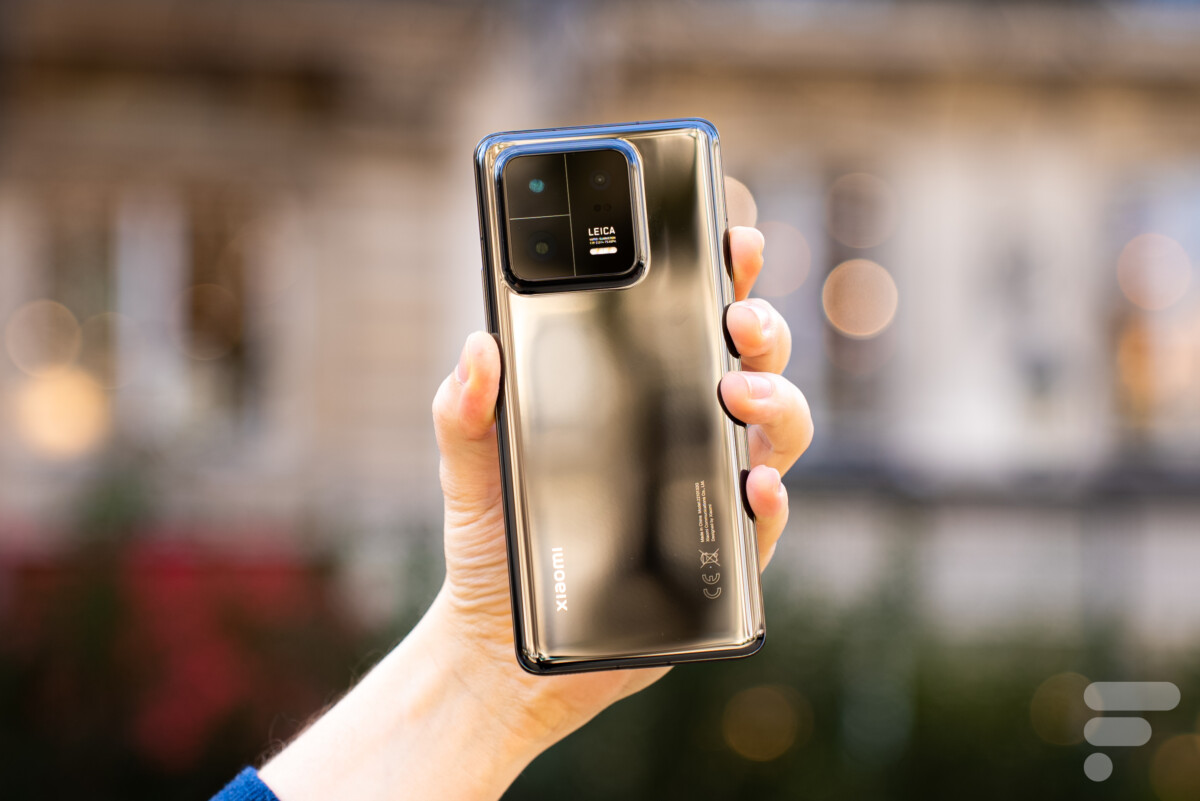
Xiaomi has also stepped up its game on design. Premium devices require the best certifications, and the good news is that Xiaomi has given the 13 Pro an IP68 rating, making it fully waterproof. The presence of Corning Gorilla Glass Victus on the back also helps to reassure. That’s a good point.
The phone hasn’t just gained certifications; it has also gained some weight: 229 g compared to 205 g on last year’s 12 Pro. It is also thicker: 8.38 mm compared to 8.16 mm last year. All of these elements add up to a slightly less comfortable grip.
While the Xiaomi 13 Pro seems more solid and polished than last year’s model, it is also less pleasant to hold. Perhaps the absence of flat edges contributes to this impression. The frame is a classic one, with a curved screen at the front and the back that follows the phone’s contour. The finish is good no matter what.
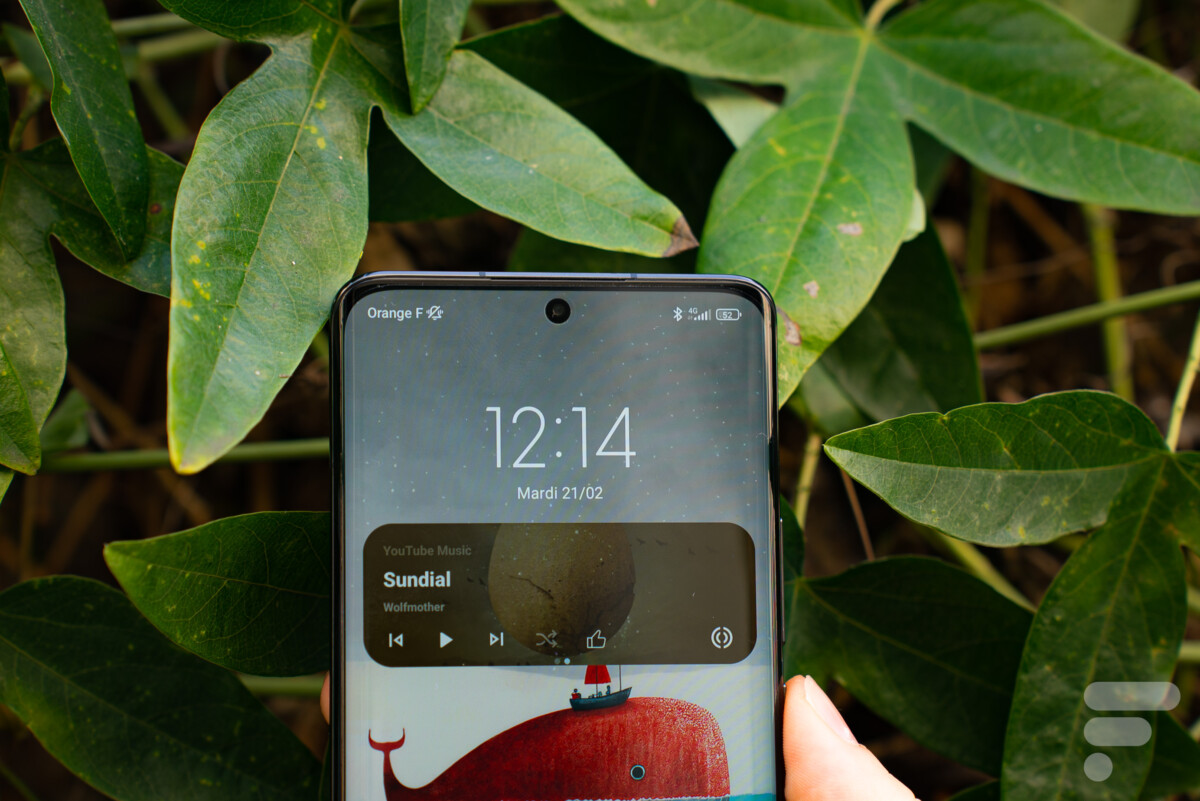
To finish the tour, it should be noted that the phone has a rather elongated shape, but its buttons are still easily accessible. The fingerprint sensor under the screen is responsive, but it is located a bit low, requiring some contortion to reach. The SIM tray can accommodate two SIM cards.
Screen
The Xiaomi 13 Pro features a large 6.73-inch screen with a comfortable resolution of 3200 x 1440 (WQHD+), 20:9 aspect ratio, and 522 ppi resolution. The refresh rate goes up to 120 Hz and down to 1 Hz.
Overall, it’s a smooth, pleasant screen that’s spacious enough not to feel cramped. The only small issue I noticed is with the brightness sensor. It is very slow and tends to underdose the amount of light needed at any given moment. I found myself with reflections in bright sunlight.
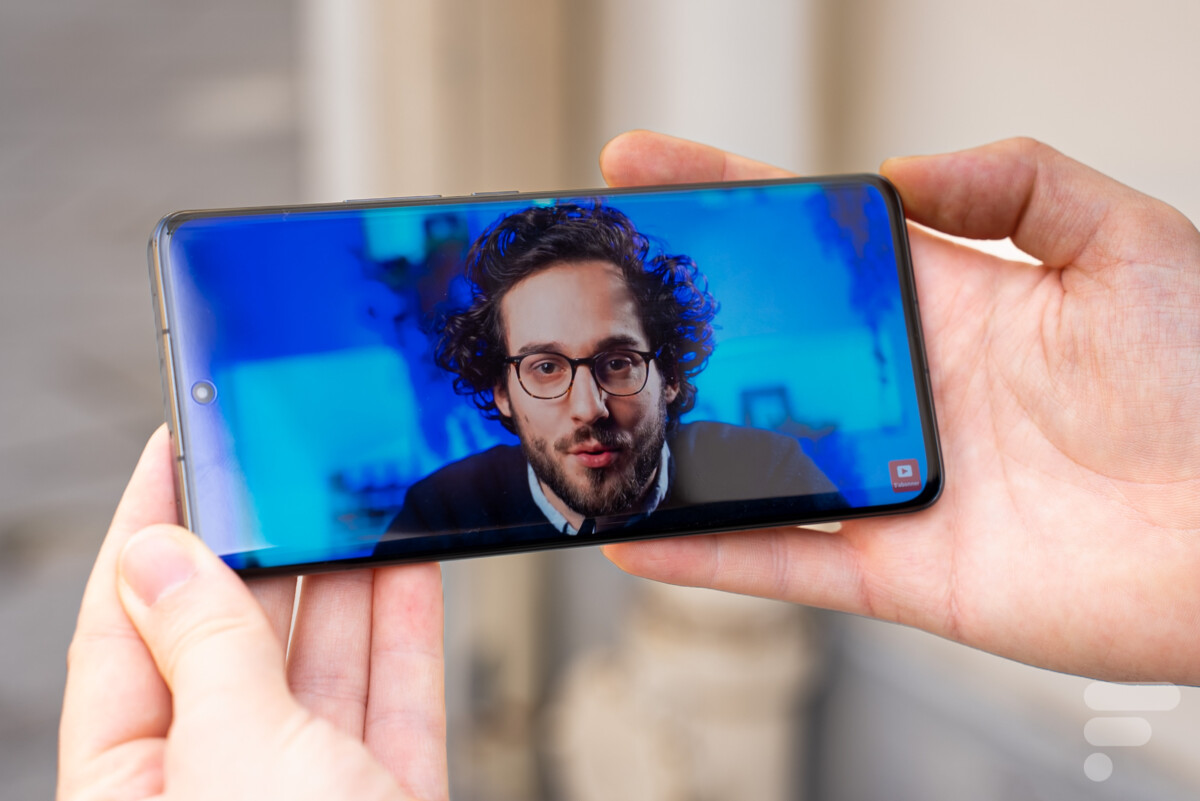
However, the screen is capable of getting bright, as demonstrated by our testing using Portrait Displays’ CalMAN Ultimate software. The brightness goes up to 1123 cd/m² in SDR and 1486 cd/m² in HDR. This is more than enough, even if you don’t always get to enjoy it.
Our measurements of color spectra are a bit disappointing. In the intense color mode, which is supposed to be the most vibrant, the phone scores at 143% of sRGB and 96% of DCI-P3. That’s too little for a high-end smartphone in 2023.
The Delta E, which measures color consistency, makes up for it a bit with an average Delta E of 3.81, which is quite close to the desired 3. In normal mode, which is more natural, there are few changes: 90% of DCI-P3 and an average Delta E of 3.63.
In HDR, a display mode that incorporates more nuances in the dynamic range and is therefore more demanding, the accuracy remains in place with an average Delta E of 3.62 in vivid mode and 3.45 in normal mode.
Software
The Xiaomi 13 Pro comes with MIUI 14 under its Android 13 version.
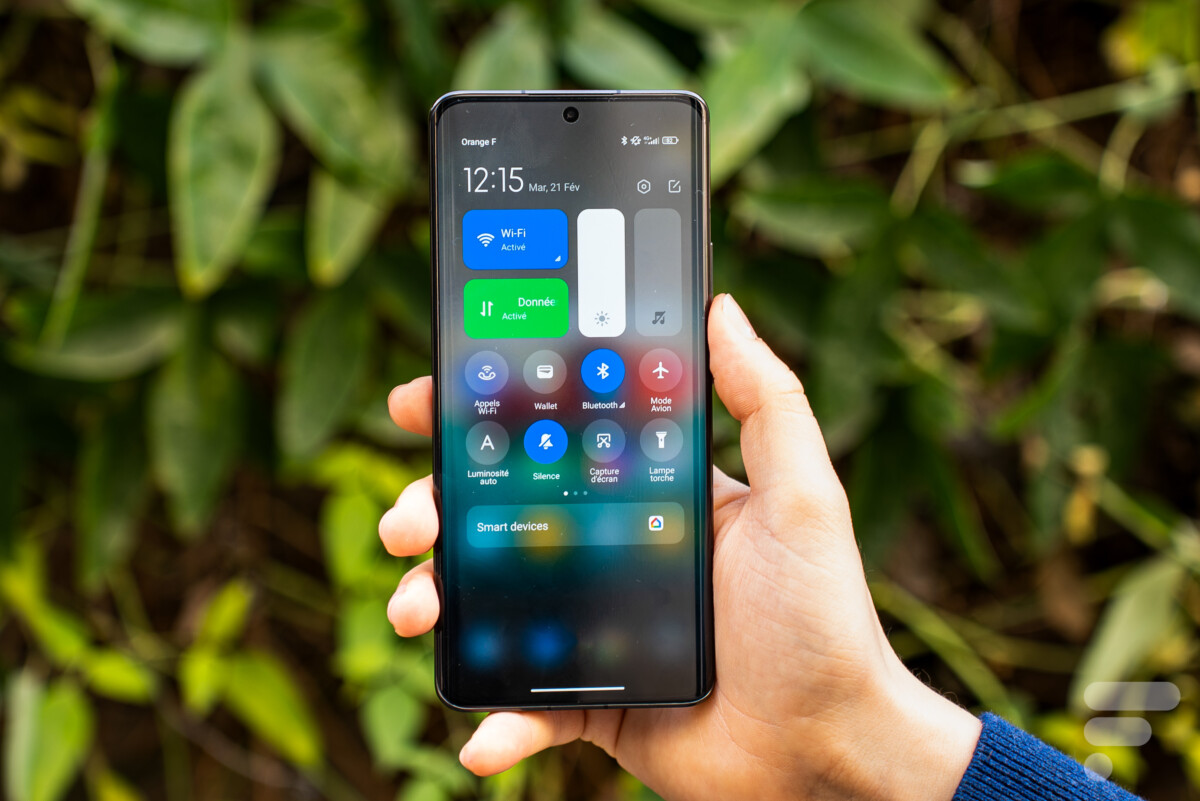
The Chinese manufacturer’s interface provides an interesting mix between classic Android and the typical iOS iPhone interface by separating its control center and notifications. While it takes a little practice to get used to it, you get used to it without any problem. The control center is clear and practical.
While it may seem a bit anecdotal, the manufacturer is still a bit behind on an element that is now an integral part of the Android experience. I’m talking about Monet. This is the name given to the system that allows you to draw inspiration from the wallpaper colors to color the interface. The app drawer and its organization by category, as well as the arrangement of settings, the interface sometimes seems a bit cluttered, or even a bit old school.
More prosaically, MIUI still manages to offer a good overall experience. The animations are smooth, fast, and there are no bugs. The near absence of bloatware, these pre-installed apps on phones to lower the cost of phones, is a real plus. Only Netflix is pre-installed outside of the manufacturer’s apps.
We can also mention the proprietary widgets system, which allows you to add quick functions to the home screen. An option also allows you to erase the names of the apps for an even cleaner interface.
Overall, Xiaomi has improved its interface by adding a host of small details, and customization is the keyword. Don’t like the page change animation? You can change it. The app drawer bothers you, another option exists. You want to change the size of the icons, it’s possible.
It’s a shame Xiaomi had the opportunity to align itself with the competition on the duration of updates for its flagship. We’ll only have three years of Android updates. However, the Chinese manufacturer is making an effort and extending its security support to five years of patches. Give us four years of Android updates, and we’re good. No problem enjoying HD.
Camera
Here is the photo setup of the Xiaomi 13 Pro:
| Camera | Sensor | Megapixels | Type | Pixel size | Aperture | Focal length | Image Stabilization |
|---|---|---|---|---|---|---|---|
| Main | IMX 989 | 50 | 1-inch | 1.6 µm / 3.2 µm (4-1) | f/1.9 | 23mm | Hyper OIS |
| Ultra wide | – | 50 | – | – | f/2.2 | 14mm | – |
| Telephoto | – | 50 | – | – | f/2.0 | – | OIS |
| Selfie | – | 32 | – | – | f/2.0 | – | – |
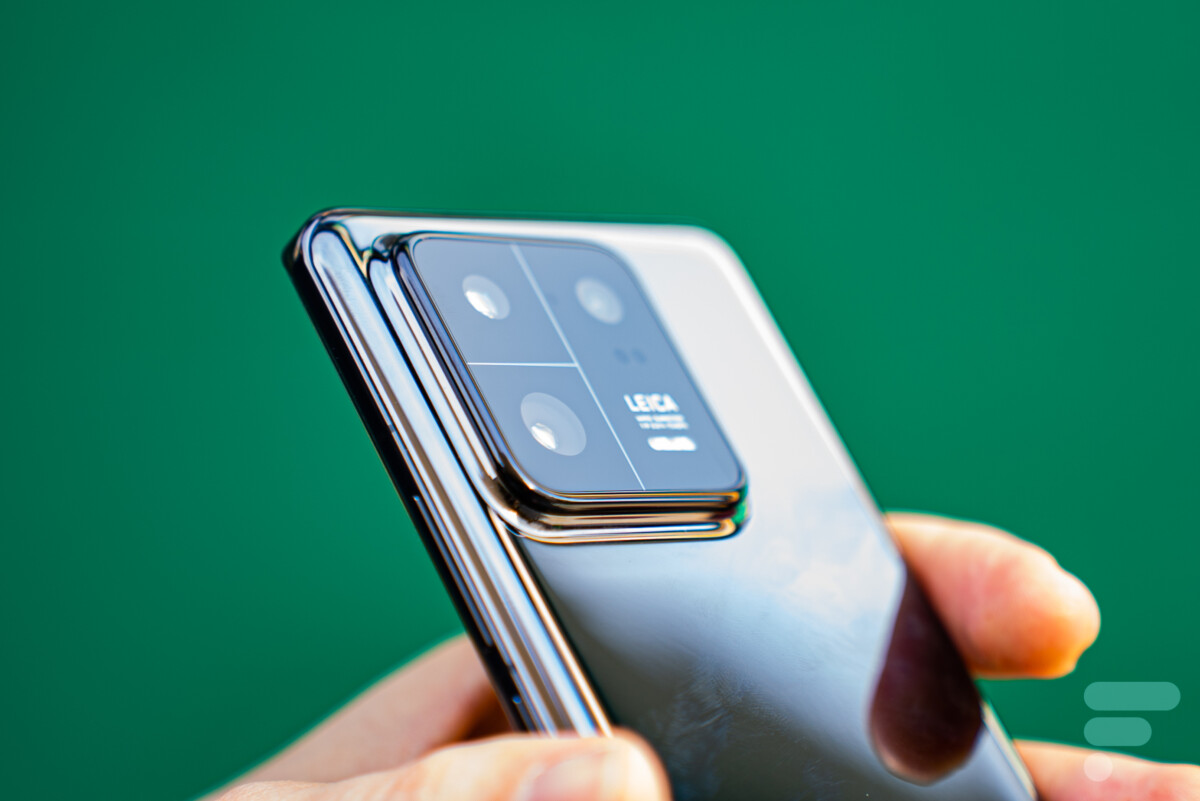
Main sensor
The one-inch sensor does well in offering a level of detail and a pleasant amount of light. The phone offers a choice between two color profiles: Leica Vibrant and Leica Authentic. The Authentic version is more natural.
When getting close to the subject, that’s where the camera does wonders. All the micro-details stand out naturally. A true pleasure.
However, the HDR can sometimes do some strange things, as you can see in the photo of my colleague Arnaud above. Fortunately, this remains a marginal behavior.
The question of sharpness remains. While the level of detail can be higher in many cases, there is still a different approach from Samsung, Oppo, and other Google Pixels: clarity is not pushed as much as with their competitors. This allows for more details to be recovered when approaching the subject, but if you don’t zoom into the photo, this quality doesn’t stand out.
If you like a rendering that doesn’t emphasize contrasts too much, you should appreciate Xiaomi’s photos. If you fell in love with the photos of the Pixel or the latest S23, know that they are not at all from the same school.
Ultra wide-angle
With the ultra wide-angle, of course, you get a wider field of view, but not without losing a bit of sharpness and light quantity.
Xiaomi still manages its subject well in that color consistency is maintained. We won’t overlook the traditional distortions inherent in the ultra-wide-angle.
The macro mode offered by the ultra-wide-angle is quite convincing. Good sharpness, controlled focus, we take full advantage of it, especially since it is triggered automatically as soon as we are close enough to the subject.

Telephoto
The camera I undoubtedly used the most is the telephoto lens. As usual, the pleasure of a photo taken at a good distance is still there.
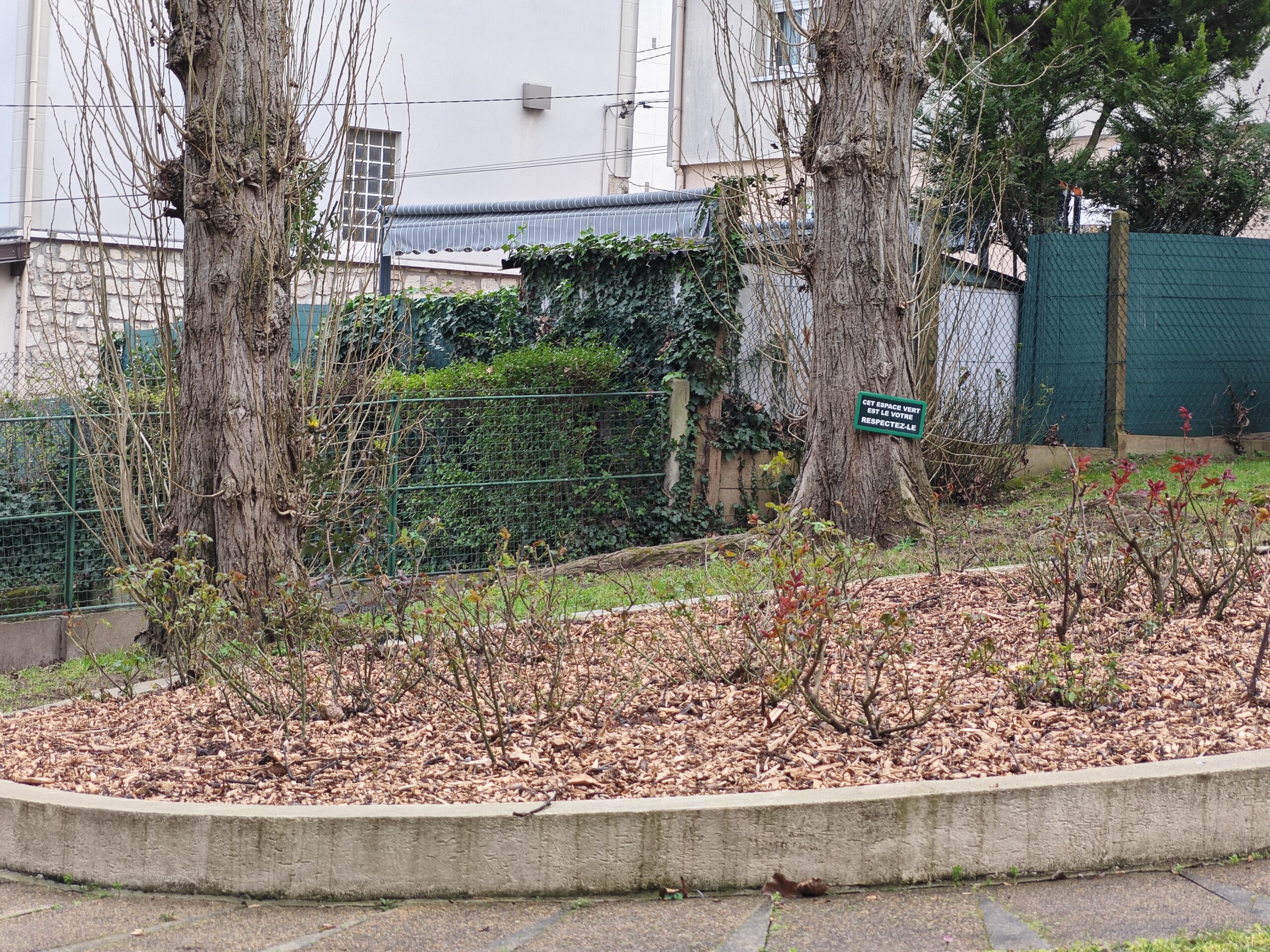
With a more sober color profile than its peers, it offers a zoom factor of 3.5. It may lack a bit of detail compared to the main sensor, especially when getting close to the subject. Here, the autofocus seems to play it safe, resulting in less fine shots than one might expect.

Portrait
The photos below have all been reduced in size: each one was around 14 MB. If it is a little less noticeable now that they have been reduced, the portrait mode is a real strength of this phone. All the shots were taken with the telephoto lens, which is particularly adept at this. The background blur is controlled, and while the skin is a bit smoothed, detail can be recovered thanks to an HD mode, as you can see in my colleague Hugo’s last shot.
Night
The night mode does its job on the main sensor. We get a good amount of light that allows us to work and capture a lot of detail in the scene. I also had very few blurry shots and the lens flares are fairly well controlled, although they do sometimes spread a little.
The ultra-wide-angle lens does not perform as well. The shots are often blurry and the light effects are less well controlled. Avoid it.
The telephoto lens, on the other hand, is particularly adept at this. It takes advantage of the light that is offered to it.
However, be careful if you shoot outdoors, as even the slightest movement can ruin the photo.
Selfie
While it smoothes out the subject a bit and can give a slightly desaturated appearance, the selfie mode still does its job. We retain a good amount of detail (see the beard or hair). At night, focus can pose some issues.
Video
The Xiaomi 13 Pro is capable of shooting in 8K 24 FPS or 4K up to 60FPS.
The stabilization is rather satisfactory, although we have seen better on the Galaxy S23 Ultra. Otherwise, the video is usable without reaching the level of an iPhone 14 Pro.
Performance
To function, the Xiaomi 13 Pro relies on a Snapdragon 8 Gen 2 chip aided by 12 GB of LPDDR5X RAM and 256 to 512 GB of UFS 4.0 storage. This is nothing short of the most powerful chip currently in use on Android, so needless to say, we encountered no performance issues in daily use.
| Model | Xiaomi 13 Pro | Samsung Galaxy S23 Plus | OnePlus 11 | Asus Zenfone 9 |
|---|---|---|---|---|
| AnTuTu 9 | 1261445 | 1215386 | 11039994 | 1085542 |
| AnTuTu CPU | 265628 | 259522 | 201223 | 255974 |
| AnTuTu GPU | 569642 | 531782 | 535813 | 468392 |
| AnTuTu MEM | 239462 | 246024 | 212627 | 181036 |
| AnTuTu UX | 186713 | 178058 | 154331 | 180140 |
| PC Mark 3.0 | 14023 | 15171 | 10052 | 16292 |
| 3DMark Wild Life Extreme | 2984 | 3837 | 3536 | 2776 |
| 3DMark Wild Life Extreme average framerate | 18 FPS | 23 FPS | 21.20 FPS | 16.6 FPS |
| GFXBench Aztec Vulkan/Metal high (onscreen / offscreen) | 88 / 68 FPS | 101 / 71 FPS | 53 / 31 FPS | 67 / 51 FPS |
| GFXBench Car Chase (onscreen / offscreen) | 109 / 127 FPS | 106 / 122 FPS | 55 / 125 FPS | 89 / 103 FPS |
| GFXBench Manhattan 3.0 (onscreen / offscreen) | 121 / 325 FPS | 120 / 254 FPS | 60 / 318 FPS | 119 / 258 FPS |
| Geekbench 5 Single-core | 1478 | 1430 | 1168 | N/C |
| Geekbench 5 Multi-core | 4715 | 4362 | 4677 | N/C |
| Geekbench 5 Compute | 8898 | 10769 | 8861 | N/C |
| Sequential read/write speed | 3568 / 2674 MB/s | 3412 / 1118 MB/s | 3040 / 2572 MB/s | 1955 / 1453 MB/s |
| Random read/write speed | 100913 / 130082 IOPS | 112425 / 42193 IOPS | 93033 / 136866 IOPS | 94123 / 125455 IOPS |
In terms of performance, according to our benchmarks, the phone is obviously among the top performers on Android. There is no need to worry about that.

In gaming, running Genshin Impact, the Xiaomi 13 Pro manages without flinching to run the game at the maximum quality level and at 60 FPS. If there is any heating during the game (it rises to 51°C), the width of the phone allows it to remain quite comfortable. It should be added that no sudden drop in performance is to be reported. In a 20-minute game session, the phone maintains stable 60 FPS.
Battery
The Xiaomi 13 Pro displays just decent battery life with its 4820 mAh battery. Unplugged at 9:30 am, I found myself with 34% battery life at 6:10 pm after a fairly busy day, but with less than 4 hours of screen time.
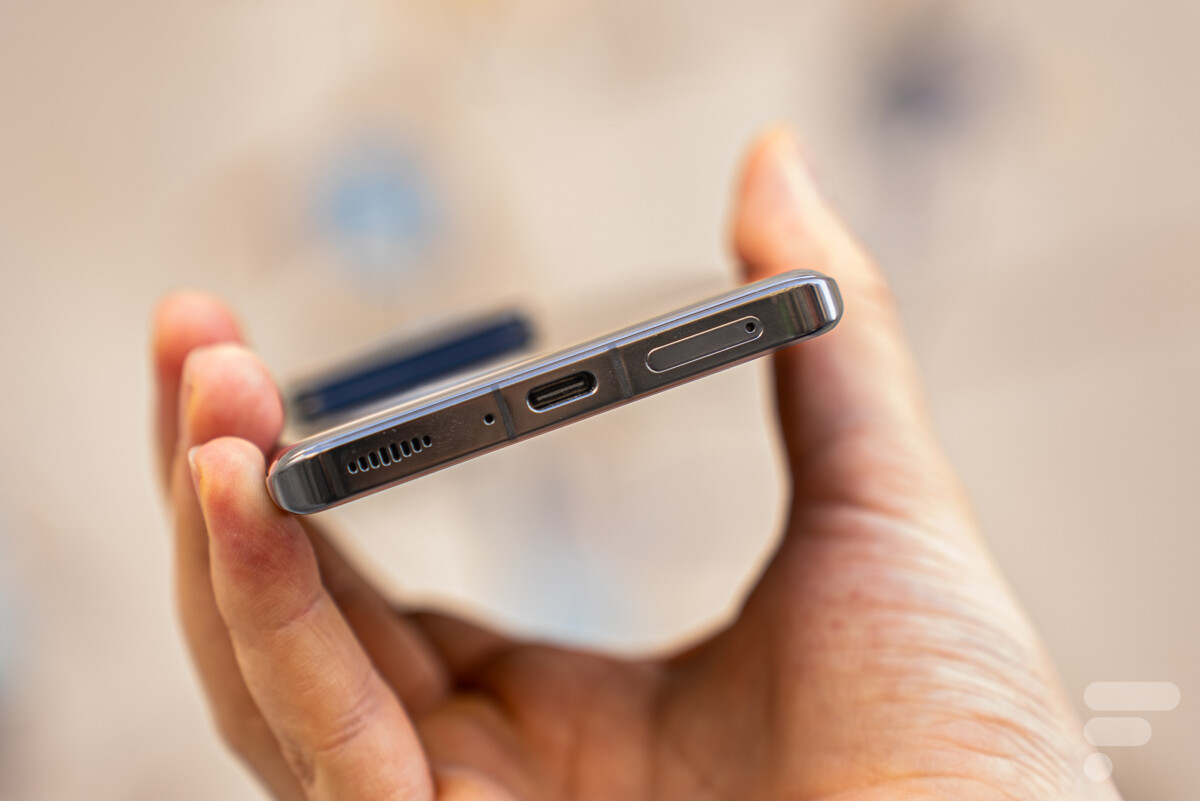
Our test using ViSer software, via our custom protocol that simulates continuous phone activity, is more reassuring. It took 13 hours and 32 minutes for the phone to reach 10% battery life. A score close to the Galaxy S23 Plus which places it 29th out of 89.
Charging
Where the Xiaomi stands out from its Korean competitor is in its charging capability, as not only does its charger come in the box, but it is also capable of providing 120W to the phone. However, by default, the phone will not receive its full power. A software activation on the phone is required in the battery settings. Once configured, here are the results starting from 4.5%:
- 5 minutes: 39%;
- 10 minutes: 61%;
- 15 minutes: 79%;
- 20 minutes: 96%;
- 22 minutes: 100%.
After a strong start, a slowdown is observed. This protects the battery, which still reaches 43 degrees Celsius after 10 minutes before dropping to 41.5 degrees Celsius after 15 minutes.
It should be noted that there is a 50W wireless charging and a 10W reverse charging feature.
Audio
The Xiaomi 13 Pro features two speakers and is compatible with Dolby Atmos. First of all, the balance between the two speakers is rather well done. It can be felt that the main one has a little more power, but it holds back to avoid creating any imbalance. Clever.
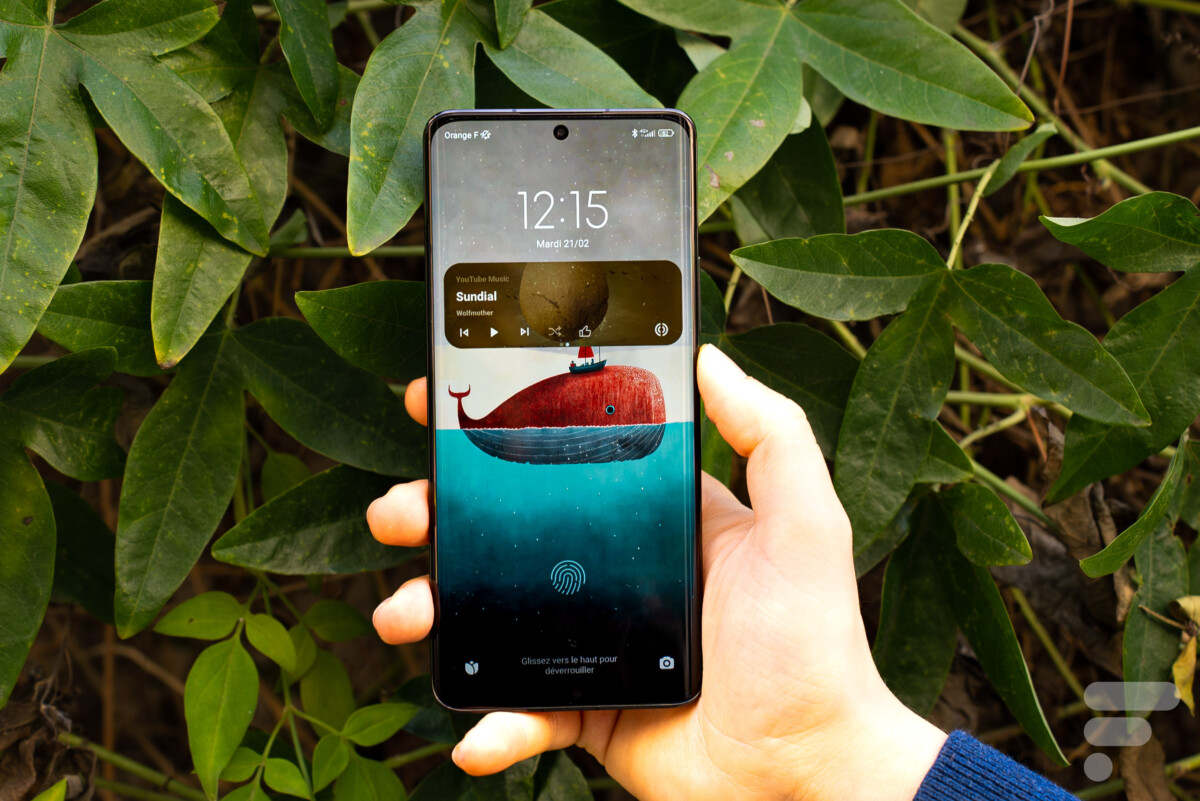
The maximum volume is sufficient to enjoy it without being frustrated, and it can even be used to play music for a small group. As for the sound distribution, it is quite round, with a lot of midrange and supported by some bass. The sound is pleasant to the ear and there is no crackling to report.
Networks and Communications
The Xiaomi 13 Pro is a 5G smartphone capable of using all sub-6 GHz bands. It also integrates Wi-Fi 7 and Bluetooth 5.3, so you have plenty to work with.
Price and Release Date
The Xiaomi 13 Pro costs $1300 for 12GB of RAM and 256GB of storage. Two colors are available: black and white.
Our Opinion
Design
Xiaomi has done a good job by adding IP68 and Gorilla Glass Victus, which provide a certain level of durability. The phone feels quite heavy and thick in the hand, but the finishes are good, even if the design seems relatively classic. If you are allergic to fingerprints, the glossy back will definitely require a case.
Display
While the screen is far from unpleasant to use on a daily basis (large size, fluidity, OLED) and will be very suitable for regular use, at $1300, we expect better in our measurements. The fact that it does not reach 100% of DCI-P3 is a bit disappointing, although it makes up for it with good calibration. The brightness sensor also experiences some difficulties.
Camera
The portrait mode is a real strength, the night mode is effective, the macro mode is usable, the one-inch main sensor is working at full capacity, and the telephoto lens performs well. Overall, the camera is satisfactory. The basic colorimetry is a bit too saturated, and some focusing issues can cause a loss of detail. The sharpness could be better.
Performance
It is very powerful with controlled heating. There is nothing to complain about: this is a smartphone that should not struggle in a few years.
Software
MIUI 14 has clearly improved, and Xiaomi’s interface still shines with its multitude of technical details, settings, and certain fluidity. Efforts still need to be made on ergonomics or integration of new Android features, such as Monet, which has once again been left out. We also regret that there are only three years of Android updates, although the transition to five years of security patches is pleasing.
Battery Life
It can last a full day on heavy usage and a day and a half on light usage. Therefore, the battery life is quite good. The Xiaomi 13 Pro stands out with the presence of a 120W charger in the box, offering a full recharge in just over 20 minutes.
Editor’s Verdict
Stuck at about $100 more than an excellent Galaxy S23 Ultra and more expensive than the Galaxy S23 Plus, the Xiaomi 13 Pro struggles to justify its price, which has increased by $200 since the previous model.
It is a shame because the phone is good, probably the best “Pro” ever released by Xiaomi to date. The expected protection standards are finally there, the performance is controlled with heating that does not exceed the limits, the battery life is decent, and it is enhanced by a very efficient fast charge. Above all, the camera has made a great leap forward: the sharpness is good, the overall photo quality is present, despite some mistakes (colorimetry, small focusing issues).
The Xiaomi 13 Pro is therefore a smartphone that is very well managed. However, it lacks some tricks up its sleeve. Starting with its software: MIUI has made progress, but the interface needs to be a little more ergonomic. Above all, we strongly regret the choice of limiting major updates to only three years.
If these few drawbacks do not deter you, the Xiaomi 13 Pro may be the right choice for you. In a few months, with a few hundred USD less on its price tag, the Xiaomi 13 Pro could be an excellent premium smartphone. For now, it struggles to stand out from the competition, despite its clear qualities.
Pros of the Xiaomi 13 Pro include:
- Good portrait mode, satisfactory telephoto lens
- Good sharpness, overall photo quality
- Fast charging (with charger included in the box)
- Top-notch performance
Cos of the Xiaomi 13 Pro include:
- Incomplete DCI-P3 coverage
- Only three years of Android updates
- Heavy, glossy, and thick design
- The price

